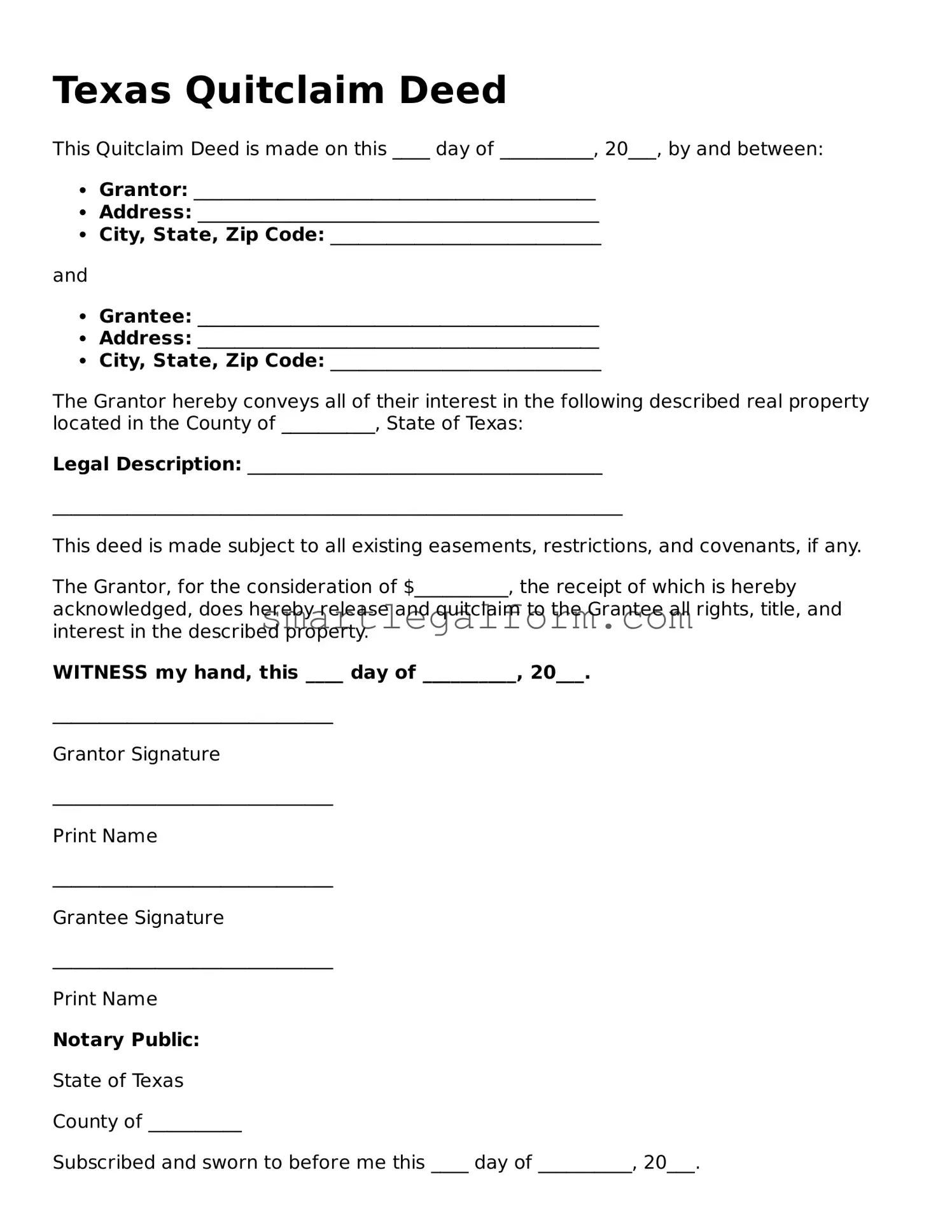Texas Quitclaim Deed
This Quitclaim Deed is made on this ____ day of __________, 20___, by and between:
- Grantor: ___________________________________________
- Address: ___________________________________________
- City, State, Zip Code: _____________________________
and
- Grantee: ___________________________________________
- Address: ___________________________________________
- City, State, Zip Code: _____________________________
The Grantor hereby conveys all of their interest in the following described real property located in the County of __________, State of Texas:
Legal Description: ______________________________________
_____________________________________________________________
This deed is made subject to all existing easements, restrictions, and covenants, if any.
The Grantor, for the consideration of $__________, the receipt of which is hereby acknowledged, does hereby release and quitclaim to the Grantee all rights, title, and interest in the described property.
WITNESS my hand, this ____ day of __________, 20___.
______________________________
Grantor Signature
______________________________
Print Name
______________________________
Grantee Signature
______________________________
Print Name
Notary Public:
State of Texas
County of __________
Subscribed and sworn to before me this ____ day of __________, 20___.
______________________________
Notary Public Signature
My Commission Expires: ___________
